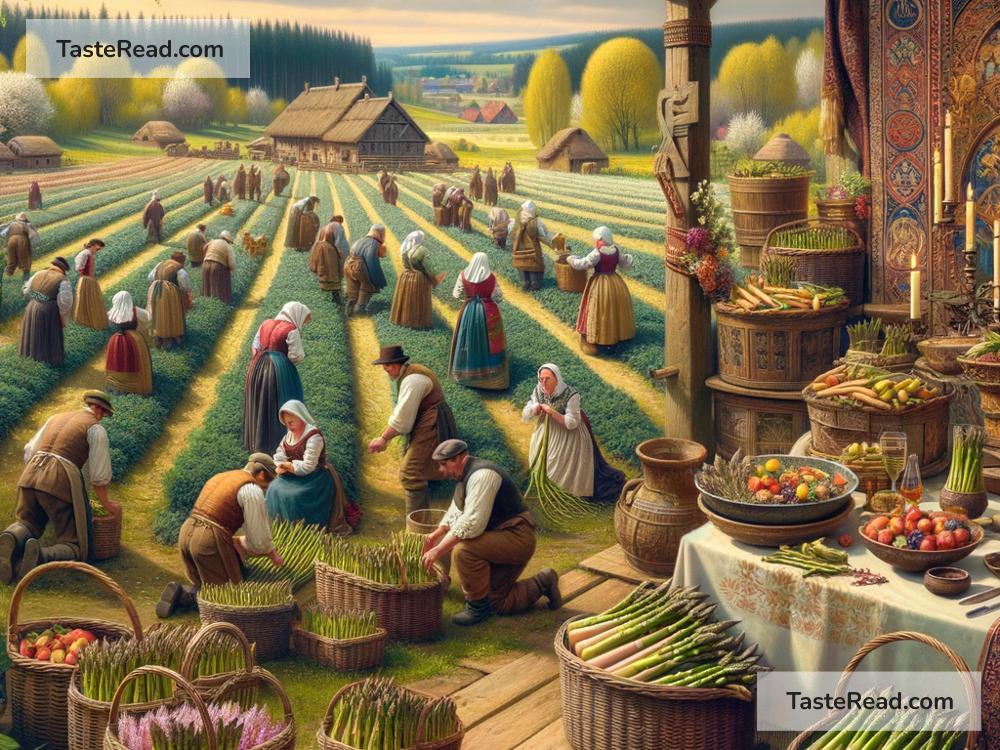The Ancient Rituals Surrounding Asparagus in Europe
When we think of asparagus, we often picture a tasty green vegetable that goes well with a healthy meal. But did you know that asparagus has a fascinating history in Europe? Long before it became a popular food, asparagus was celebrated for its medicinal powers, cultural importance, and even mysterious rituals. While it might just seem like a vegetable today, asparagus once had a deeper role in people’s lives. Let’s take a journey back in time to explore the ancient traditions and rituals surrounding this unique plant.
The Origins of Asparagus
Asparagus is among the oldest cultivated vegetables in the world. The word “asparagus” comes from the Greek word aspharagos, which means “shoot” or “sprout.” First grown thousands of years ago in the Mediterranean, asparagus quickly became prized for its versatility and health benefits. The Greeks and Romans were the first Europeans to actively cultivate asparagus, enjoying its distinct taste and recognizing its value.
However, asparagus wasn’t just cherished for food. It symbolized renewal and vitality. The way asparagus sprouted quickly in spring made it a natural representation of new beginnings, which is why many early cultures associated it with fertility and rebirth.
Rituals of Ancient Greece and Rome
In ancient Greece, asparagus was believed to have magical properties. It was thought to bring luck to farmers and enhance the fertility of both humans and animals. During planting season, farmers would perform rituals to ensure a strong harvest. These rituals often included burying offerings such as grains or small tokens of thanks to the gods in the soil before planting asparagus seeds. The Greeks believed that asparagus sprouting successfully was a sign that the gods had blessed their efforts.
Similarly, in ancient Rome, asparagus held a special place in cultural and religious ceremonies. Romans believed it had healing qualities, using it to treat ailments such as toothaches and stomach problems. Wealthy Roman citizens were even known to organize feasts centered around asparagus, showcasing its rarity and importance. Priests sometimes included asparagus in offerings to the gods during spring festivals. Pliny the Elder, the famous Roman historian, even wrote about asparagus in his encyclopedic work Natural History, highlighting how much they valued the plant.
Medieval Europe: Mysticism and Symbolism
During medieval times in Europe, the view of asparagus remained closely tied to nature and the spiritual world. As Christian traditions overtook ancient polytheistic practices, asparagus rituals transformed. People still associated the vegetable with rebirth and renewal, but now they connected it with Easter and the resurrection of Jesus Christ. For some communities, asparagus became a springtime staple, symbolizing the end of long winters and the beginning of warmer, fruitful days.
Farmers in medieval Europe often followed superstitious practices to grow better asparagus crops. For example, they believed that planting asparagus during a waxing moon (when the moon grows larger) would bring a stronger harvest. In rural areas, it was common to scatter blessed water on asparagus fields to ward off pests and diseases, blending pagan and Christian traditions into the farming process.
Asparagus as a Love Ingredient
Asparagus also had a reputation for being an aphrodisiac. Many ancient European cultures believed that eating asparagus could spark feelings of romance and desire. The vegetable’s shape and its ability to grow quickly after planting made it symbolically connected to fertility. During weddings or spring festivities, couples would sometimes eat asparagus to bring good fortune to their marriage.
In the Renaissance, asparagus appeared on the tables of royal and noble families as a delicacy. Legends suggested that eating asparagus before a big romantic occasion guaranteed success in love. Word of this spread across Europe, and asparagus continued to earn its reputation as a special plant.
Modern-Day Asparagus Traditions
While asparagus rituals have faded with time, its importance in European culture hasn’t disappeared. Some regions continue to celebrate asparagus with annual festivals. For example, in Germany, “Spargelzeit” (asparagus season) is a time of joy, taking place during spring. German farmers grow white asparagus, a variety that is particularly prized. Locals host feasts, markets, and even contests—all dedicated to this beloved vegetable.
Other parts of Europe, like France and Italy, honor asparagus as a seasonal treat. Culinary traditions, many of which date back centuries, have carried forward the legacy of asparagus as a special food. In these regions, eating asparagus is still seen as a celebration of spring and renewal.
Conclusion
Asparagus may seem like just another vegetable, but its history tells a different story. In ancient Europe, it was more than food—it was a symbol of rebirth, a gift to the gods, and even a tool for love. People celebrated its arrival in spring, performed rituals for its growth, and connected it to their spiritual beliefs. Today, while many of those traditions have passed, our enjoyment of asparagus reminds us of its incredible journey from ancient fields to modern kitchens.
So, the next time you eat asparagus, remember its long history. It’s not just about taste; it’s a connection to centuries of cultural significance, rituals, and celebrations across Europe.


